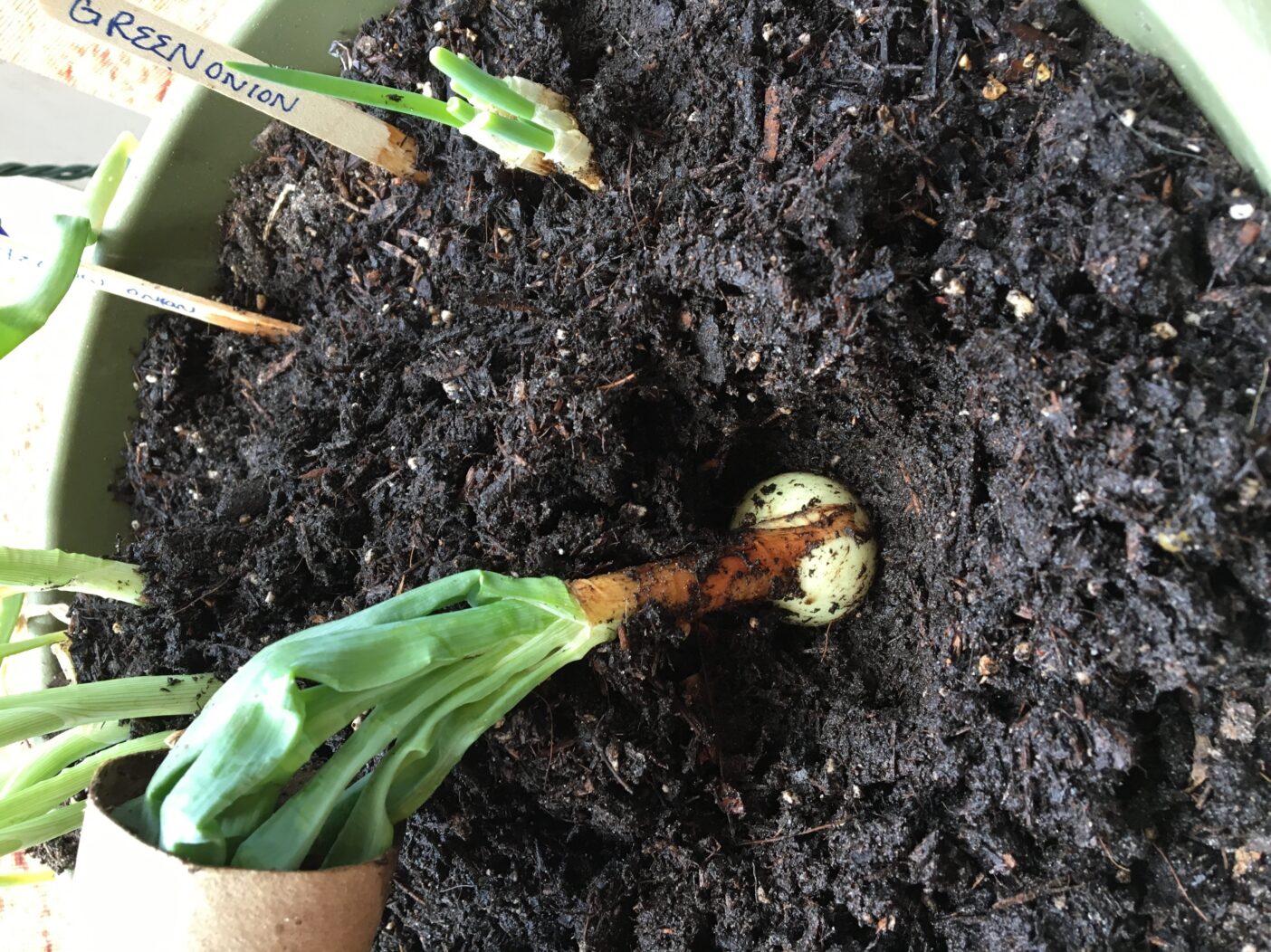
Stop! Before you toss that romaine stub or green onion bulb, you’ve got to read about the magic of plant regeneration. Did you know a number of vegetable kitchen scraps can be used to grow more veggies?
That’s right: Basil, carrots tops (which are edible), celery, bok choy, cilantro, rosemary, and onions are examples of produce that can be grown again and again with some very simple steps.
Here, Director of Education & Visitor Experience Britt Patterson-Weber and Education Programs Manager Kaitlyn Dillard walks us through how to regrow green onions.

Fill a shallow bowl or dish with an inch or so of water, and place the green onion ends in the dish, she says. Change the water every 2 or 3 days; you should start to see new growth pretty soon. You can also plant your plant parts directly in soil. Check out the photos from her kitchen. Amazing, right? We think it’s a great activity to try — especially if you have kids at home and are looking to reinforce the plant science they learn in school.
Here are a few other ideas.
Romaine lettuce: Put the stump in about a half inch of water for a few days. Refill, as needed, to maintain the half-inch depth. Plant the stump once new leaves sprout.
Celery: Cut off the base, and place it in a bowl of warm water in a sunny spot. The leaves in the middle of the base will begin to grow and thicken in about five to seven days. You can then transfer it to a pot with soil.
Basil, rosemary, cilantro: Place sprigs in a glass of water, and watch the roots start to sprout. Change the water daily. Once the roots are about 2 inches long, plant in a pot.
Onions: Save the base of the onion where roots grow, along with about an inch and a half of the onion itself. Allow the bulb to dry until you see a slight shriveling of the layers at the cut surface. Plant the onion in potting soil, deeply enough so that an inch of dirt covers the top of the onion. You can use the greens as they emerge; for a full onion you’ll need to be more patient — about three months! If you planted in a pot, make sure the pot is big enough for a full-sized onion, and keep the pot in a sunny location.
There are plenty of web resources. In addition to Britt and Kaitlyn’s guidance, we used:

